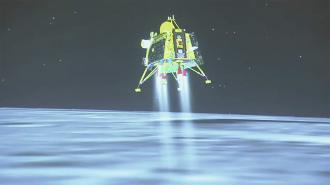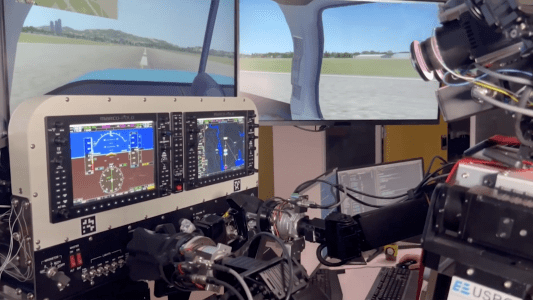India has just become the fourth nation to soft land a spacecraft on the moon — and the first to do so near the elusive but alluring lunar south pole.
The south pole: Since the 1960s, the US, the USSR/Russia, and China have all managed to “soft land” on the moon, meaning their spacecraft reached the lunar surface without being destroyed (crashing into the moon is considered a “hard” landing).
These landers and the rovers they carried have greatly expanded our understanding of the lunar surface, but typically only in the areas right near where they landed — the farthest a moon rover has ever traveled over the course of its mission was 24 miles.
″[The lunar south pole] can serve as a base for future exploration.”
Wendy Cobb
No one had ever soft landed near the lunar south pole before — it’s rife with craters and deep trenches, making it an inhospitable landing zone, and a recent attempt by Russia ended with the spacecraft crashing into the moon’s surface.
That means there’s still a lot about the region we don’t know, including whether the large amounts of water ice it appears to harbor are accessible.
″[The lunar south pole] really a very interesting, historical, scientific, and geologic area that a lot of countries are trying to get at that can serve as a base for future exploration,” Wendy Cobb, a professor of strategy and security studies at the US Air Force School of Advanced Air and Space Studies, told CNBC.
Historic touchdown: At 8:33 am ET on August 23, India made history by soft landing its Chandrayaan-3 spacecraft near the lunar south pole. This also marks the nation’s first successful soft landing anywhere on the moon.
“This moment is unforgettable. It is phenomenal,” said Indian Prime Minister Narendra Modi. “This is a victory cry of a new India.”
Looking ahead: India’s space agency, the Indian Space Research Organisation, has already confirmed communication with Chandrayaan-3, which includes the Vikram lander and the Pragyan rover, and shared photos from its descent to the lunar surface.
The solar-powered moon rover is expected to exit its lander soon. The pair will then spend one lunar day (14 Earth days) exploring the lunar south pole in the hope of furthering scientists’ understanding of the area — and the water ice it may contain.
We’d love to hear from you! If you have a comment about this article or if you have a tip for a future Freethink story, please email us at [email protected].






